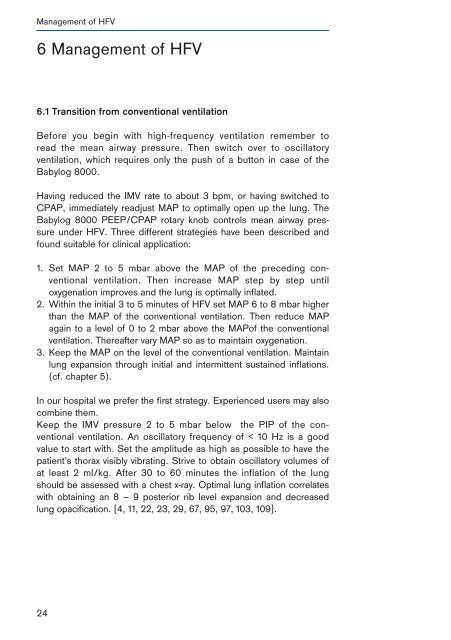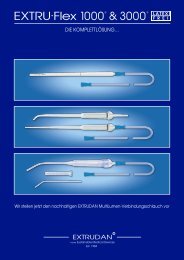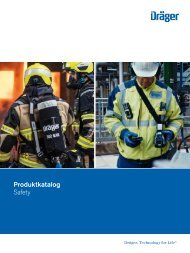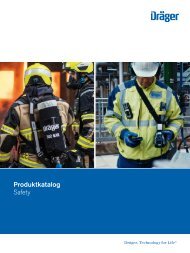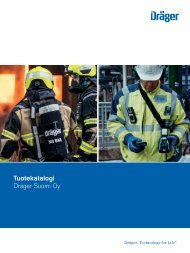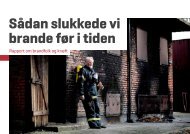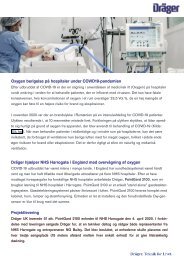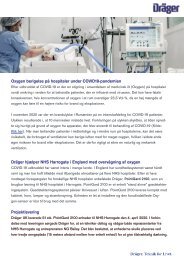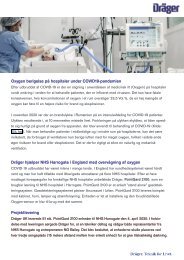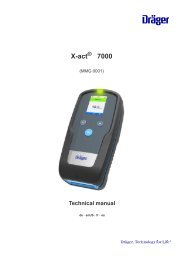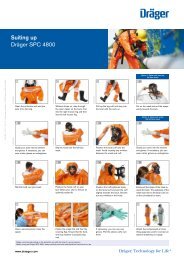High-Frequency Ventilation- Basics and Practical Applications
You also want an ePaper? Increase the reach of your titles
YUMPU automatically turns print PDFs into web optimized ePapers that Google loves.
Management of HFV<br />
6 Management of HFV<br />
6.1 Transition from conventional ventilation<br />
Before you begin with high-frequency ventilation remember to<br />
read the mean airway pressure. Then switch over to oscillatory<br />
ventilation, which requires only the push of a button in case of the<br />
Babylog 8000.<br />
Having reduced the IMV rate to about 3 bpm, or having switched to<br />
CPAP, immediately readjust MAP to optimally open up the lung. The<br />
Babylog 8000 PEEP/CPAP rotary knob controls mean airway pressure<br />
under HFV. Three different strategies have been de scribed <strong>and</strong><br />
found suitable for clinical application:<br />
1. Set MAP 2 to 5 mbar above the MAP of the preceding conventional<br />
ventilation. Then increase MAP step by step until<br />
oxygenation improves <strong>and</strong> the lung is optimally inflated.<br />
2. Within the initial 3 to 5 minutes of HFV set MAP 6 to 8 mbar higher<br />
than the MAP of the conventional ventilation. Then reduce MAP<br />
again to a level of 0 to 2 mbar above the MAPof the conventional<br />
ventilation. Thereafter vary MAP so as to maintain oxygenation.<br />
3. Keep the MAP on the level of the conventional ventilation. Maintain<br />
lung expansion through initial <strong>and</strong> intermittent sustained inflations.<br />
(cf. chapter 5).<br />
In our hospital we prefer the first strategy. Experienced users may also<br />
combine them.<br />
Keep the IMV pressure 2 to 5 mbar below the PIP of the conventional<br />
ventilation. An oscillatory frequency of < 10 Hz is a good<br />
value to start with. Set the amplitude as high as possible to have the<br />
patient’s thorax visibly vibrating. Strive to obtain oscillatory volumes of<br />
at least 2 ml/kg. After 30 to 60 minutes the inflation of the lung<br />
should be assessed with a chest x-ray. Optimal lung inflation correlates<br />
with obtaining an 8 – 9 posterior rib level ex pansion <strong>and</strong> decreased<br />
lung opacification. [4, 11, 22, 23, 29, 67, 95, 97, 103, 109].<br />
24


